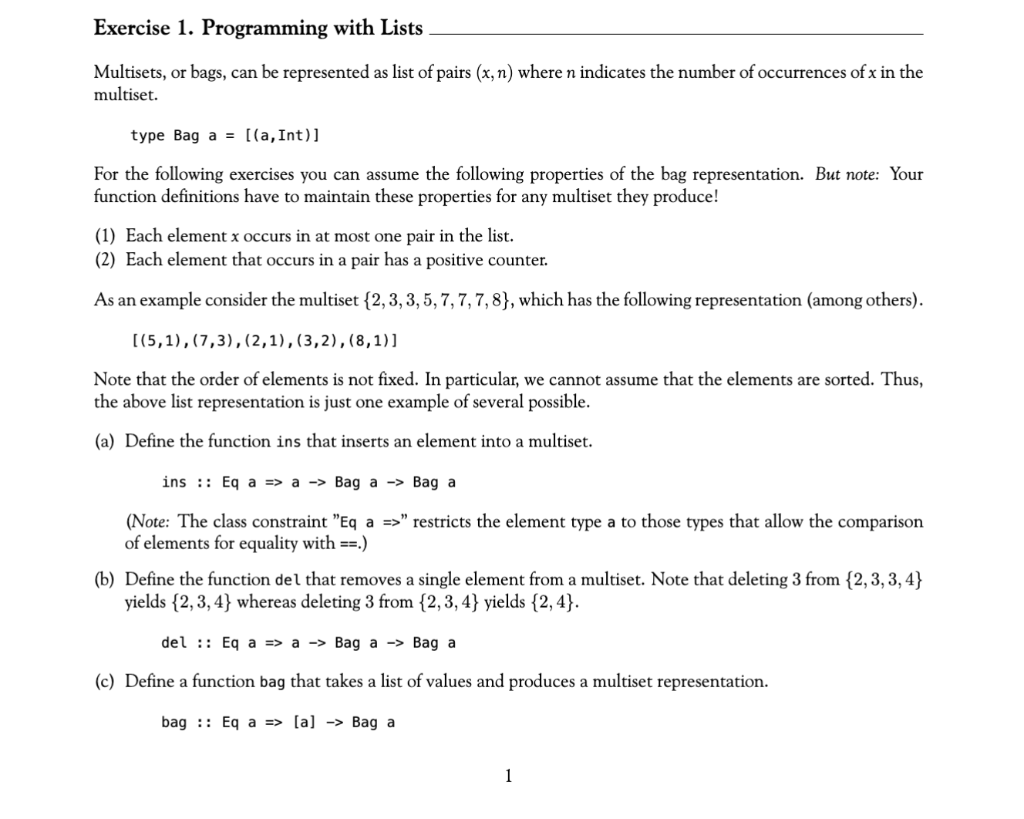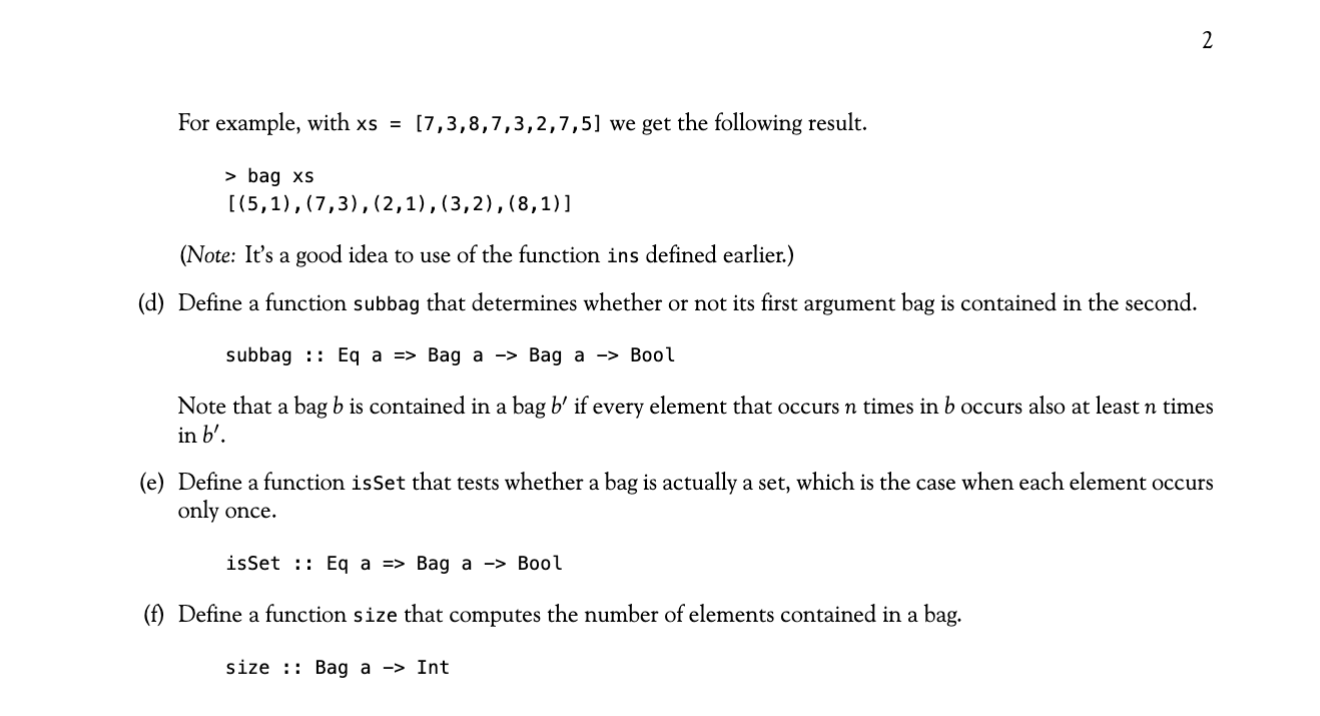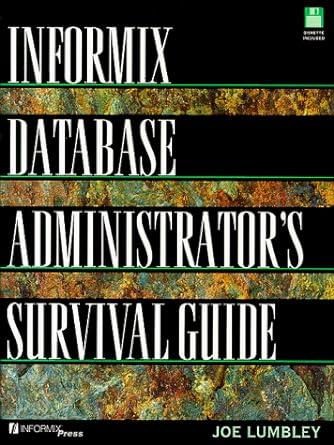Question
This is a Haskell question. Please provide the definitions for the functions in Haskell. And make sure there are no errors please. Here is the
This is a Haskell question. Please provide the definitions for the functions in Haskell. And make sure there are no errors please.
Here is the starter code provided (not everything is needed for this exercise):
module HW2types where
import Data.List (nub,sort)
-- Types for Exercise 1 -- type Bag a = [(a,Int)]
-- Types and functions for Exercise 2 -- type Node = Int type Edge = (Node,Node) type Graph = [Edge] type Path = [Node]
norm :: Ord a => [a] -> [a] norm = sort . nub
-- Types for Exercise 3 -- type Number = Int
type Point = (Number,Number) type Length = Number
data Shape = Pt Point | Circle Point Length | Rect Point Length Length deriving Show
type Figure = [Shape]
type BBox = (Point,Point)


Step by Step Solution
There are 3 Steps involved in it
Step: 1

Get Instant Access to Expert-Tailored Solutions
See step-by-step solutions with expert insights and AI powered tools for academic success
Step: 2

Step: 3

Ace Your Homework with AI
Get the answers you need in no time with our AI-driven, step-by-step assistance
Get Started


